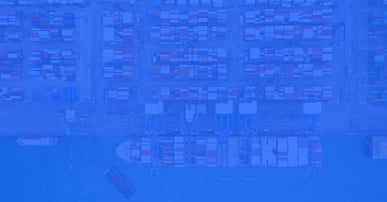Growth in global trade has shown an upward trend since the mid-eighties till about 2008 at which time the growth stage flat lined creating stagnation for the industry. This stagnation has affected all players in the industry alike – shipping lines, 3PL/4PL service providers, ship-owners etc. Now what?
As the stagnation is still plaguing the industry, the age-old adage “survival of the fittest” is playing out as companies are struggling to stay afloat. This applies as much to the logistics industry as it does to other industries. This is raising the question, "What does the future of the logistics industry look like and how will it be affected going forward?" We had a look at and digested the PWC report "The Future of the Logistics Industry" which addresses the question above. Below is our findings.
Technology is Nothing New
Interestingly enough, the Logistics Industry is one of the most dynamic industries in the world yet seemingly one of the late comers into the digital, data and technological space. However, that seems to be changing as logistics companies around the world are beginning to embrace the digital revolution and seem on track to consolidate their digital requirements.
Companies are implementing technology-based changes in essential logistics functions across various internal processes covering supply chain procurement, sales & operational planning and customer services. These new logistics functions seem to fit hand-in-hand with the new smart phone apps and GPS tracking capabilities which are removing the boundaries between the manufacturing plant, its suppliers and the routing and scheduling of cargo movement.
The Technology "Musts"
This topic has been covered quite a lot not only by us, but by industry press and reports. Nonetheless, here is a reminder of a few the big changes that are making their way into becoming an industry standard. These were once a nice-to-have and are now a given:
- JIT or Just In Time deliveries, which were accessible to a select few, could become a norm as digital technology makes deliveries, schedule management, route planning, and cargo monitoring all possible in real time.
- The IoT (Internet of Things) provides the required connection between the warehousing team and the distribution team while providing the customer with enhanced visibility of their cargo en route.
- Warehouses being robotized, drones being used for deliveries, unmanned vehicles, big data harvesting are all being implemented and improved upon as part of this digital revolution.
- On-demand and real-time data analytics on transport rates, all modes of transport transit times, risk assessment, predictive analysis and anything else that creates efficiency for suppliers, manufacturers, 3PL/4PL
These advances in technology will obviously result in goods being delivered around the corner, to the next town, to the next country, and around the world in a way that is more efficient, quick and cost effective. But, it is not only that.

Internal Efficiency Makes the Largest Difference
Companies are also increasingly focusing more on their own internal teams' efficiency. In light of the instability in trade, natural disasters, economic turmoil, etc., logistics, procurement and supply chain professionals need to have information readily available to support their decisions.
Making sure that goods get from A to B on time with little disruption to the flow, taking care and making sure that chosen suppliers are offering the best possible price with best reliability and ultimately, having the assurance that there is no change to the supply chain is what matters to industry professionals. Any disruption in the natural order of the flow of goods or supplier relationship, in the end, creates chaos and increases costs in the long run. Procurement nor top management would be pleased.
Therefore, logistics/procurement/SCM professionals must be able to rely on easy accessible data and tools that relieve the disruption, cater to everyday work task efficiency and offer security for all aspects of the supply chain.
Technology can do this.

Benefits of a Technology-Driven Industry
For technology to play an integral part in this industry, there has to be effective training of the people in order to create a digital culture and to prepare the workforce to use such tools on a daily basis. Still, even in its currently limited capacity, technology plays a crucial role in the interface between customer and logistics service provider (LSP) and there are several examples of its benefits.
Although the report highlights the lack of a clear digital operations vision and support / leadership from top management, examples of this support and leadership can be found in some of the shipping majors such as Maersk Line.
Maersk Line is completely system driven in many ports, giving customers 100% access to pick and choose the quickest and cost efficient routing, allowing them to decide when, how, and where they want the bookings to be made and bill of lading to be printed and delivered. Such flexibility shifts the power to the customer, which they can exercise at their discretion.
There are also clear economic benefits of digital investments and a real-life example of such benefits is the container terminal of Maasvlakte II in Rotterdam. Maasvlakte is a completely automated, award winning container terminal, which has increased not just the revenues of the Port of Rotterdam, but also the efficiency of port operations on a consistent level. Many LSPs work on various systems, which are not, integrated with that of their service providers which impacts on the accuracy of the operation, as well as identifying the true costs of the operation and the ability to save costs. These systems, while vital, don’t make up the whole picture. Data analytics is another huge piece of the puzzle, which will help the LSP to improve UX by predicting the requirements of the customer and pre-empting/fulfilling this requirement.

No Success Without Digital Commitment
In an ever-competitive environment, the requirements and demands of the customers are increasing while at the same time, growth is stagnating and profit margins are reducing. LSPs need to fit operationally, financially and digitally in order to stay relevant and be able to provide their customers a cost efficient, and innovative service that meets their expectations. Digital fitness is quickly becoming a prerequisite for an LSP to achieve logistics success.
Fortunately, getting your company digitally fit is easier than you think. There are a myriad of technology-based logistics and shipping companies bringing clarity and information to the industry. In today’s market place, it’s all about survival of the fittest. Being digitally fit means having the right information at the right time to make the right choices. Don’t leave your business to the whims of chance.
Bonus: SlideShare Presentation
%201.png)


-1.jpg)




